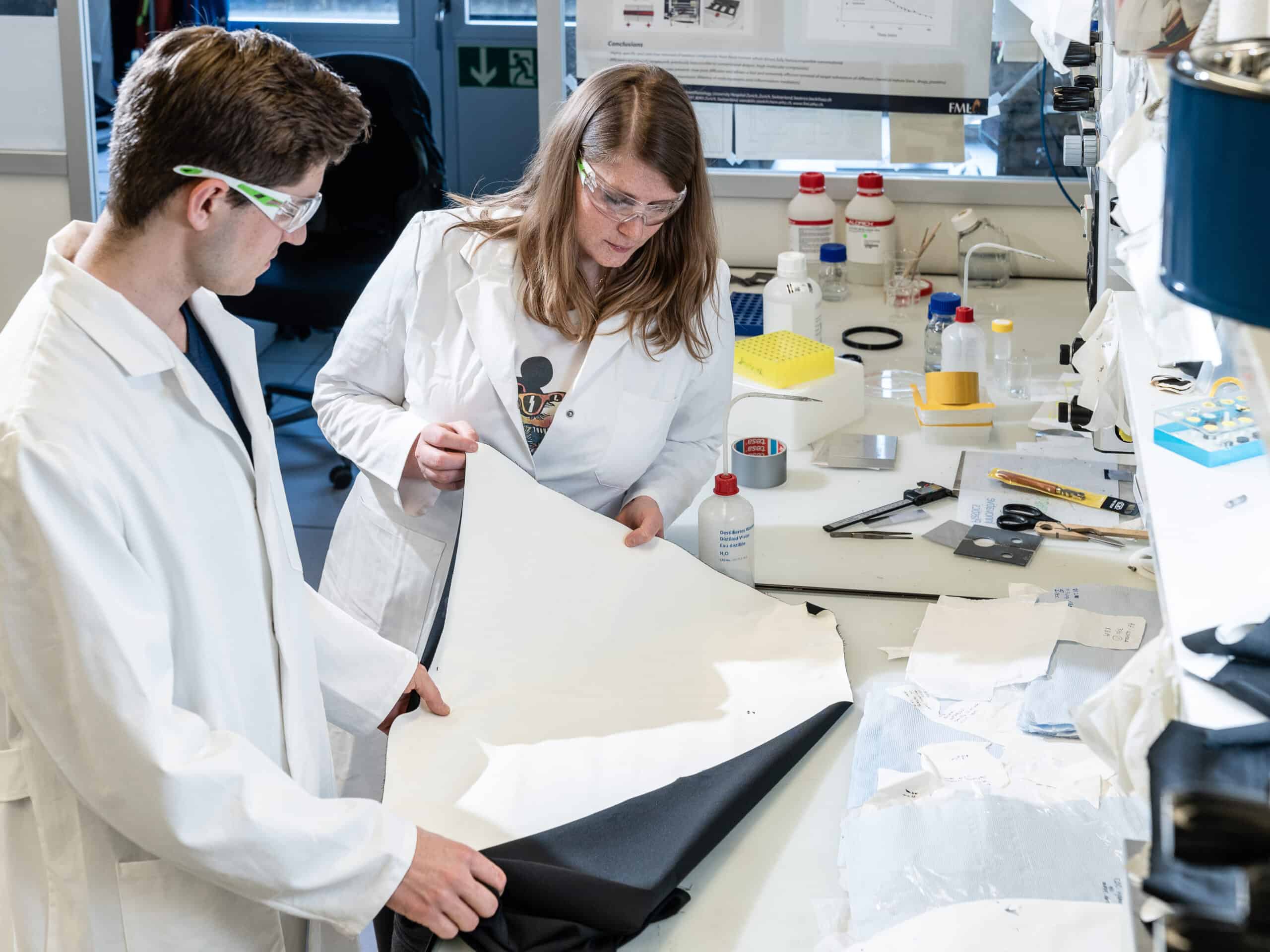
About dimpora
- Founders: Mario Stucki & Anna Beltzung
- Founded in: 2019
- Employees: 12
- Money raised: -
- Ultimate goal: Put science at service of nature.
Science and nature sometimes seem like two adversaries. Yet science can be constructive when it comes to protecting nature. As scientists, the founders of dimpora believe that they need to take action to preserve the environment. That is why they started up this company. In this instalment of the start-up-of-the-day series, Mario Stucki talks to us about dimpora and what they want to achieve with this company.
What do you actually do at dimpora?
“The core technology that we have focuses on creating sustainable porous membranes. The membrane is typically placed between two layers of fabric. This laminate is then used to create garments, which keep the rain out and let your body breathe.
The problem with current solutions on the market is that they are mostly based on fluorinated chemicals. This means that they don’t degrade in nature. When they are used for manufacturing outdoor jackets, or clothing, you end up carrying those chemicals everywhere. They have been found in very remote lakes and areas where only human beings could have brought them because they are not natural substances. That’s why we started to research how we could create membranes in a way that is respectful for the environment. They can also be used in construction, agriculture, or potentially even electronics that have to be waterproof. But we haven’t explored these markets yet.”

What about the name, what does dimpora stand for?
“Our membranes are porous. So, the second part of dimpora means pores, and the first part is a reference to dimension. The dimension part mainly stems from the ability to shape our pores three-dimensionally. We can make them smaller, or bigger. Also, we can create shaped membranes. Usually, these membranes are produced in two dimensions – flat film – then laminated together with the desired fabric. To assemble the final piece of clothing (i.e. an outdoor jacket), seams are securely sealed with seam tape to avoid water soaking in. The downside is that performance drops in these areas. Fortunately, one of the projects we are currently developing is a 3D membrane that will eliminate the use of seam tape and will allow the garment to be fully performant.”
What have been some of the challenges that you’ve faced?
“They change depending on the period in which the company is in. In the beginning, there were mostly technical things such as solving problems on a lab scale, figuring out how to make the product better, and how to make it in a different way. Then you go outside of the lab, where you are trying to find suitable partners that you can work with and then you set up the production side. Along with that, there are a few other matters that we ar working on, such as NDA protection.
Once you have a product, the problems move more to the customer side, such as finding people to test your product. After you get the first customers and results, you head back to the lab again. At the same time, you are busy building your team. And this is the most challenging, but also the most rewarding part of it all. You see how people develop and get better at what they do.”

What are you proud of?
“It’s usually the milestones that you’ve worked towards to achieve. The most rewarding is team development because you see people making progress and getting better at their work. And how you might have had an influence on their own learning process. Because you gave them an opportunity, they took it, they learned a lot and now they’re getting better at this. I am also proud of my technical development as an engineer. Now we can do our job faster, and our products are cuter and can come in different colors. All these kinds of changes that we couldn’t make initially, and have now found the solution to make them. This is really rewarding as well. And then, there’s the customers that are happy to receive a better product now, a colorful product. And these are, I would say, the most rewarding parts.”
Where do you see dimpora in five years?
“We hope that our first commercial product will come this fall. I think we will have a very big, big future. With several products in the next five years. In five years’ time, you will see our products on the streets, on the ski slopes, and in the mountains. We hope to change the way the industry thinks about these high-performance products and how to dispose of them properly at the end of their life cycle without harming the environment.”


